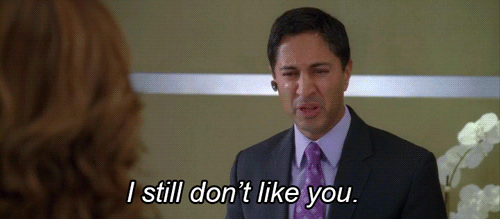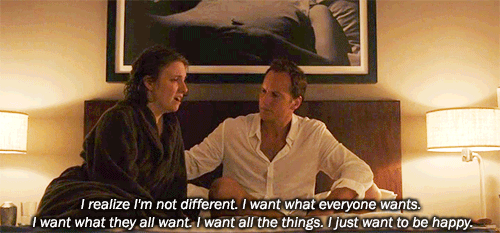Recently, 30 Rock star and all-star funny guy Maulik Pancholy came out. Putting aside the politics of coming out (as in, even needing to suggest there are still significant problems with straight people accepting queer culture into the mainstream), this is a pretty awesome revelation.
This is unlike Lance Bass or Anderson Cooper coming out; Pancholy’s a South Asian guy coming out. He’s already been othered once. He’ll now be othered twice over. Furthermore: He’s now going to be othered by members of the South Asian and gay community. But he’s a smart guy and he knew exactly what he was doing when he decided to join Out’s OUT100 this year.
Pancholy’s coming out also highlights a much larger shift in popular culture: We now live in a world where the assumption that gay culture is a world of black and white is antiquated. Here on out, any piece of media that perpetuates the myth of gay male identity being exclusive to young, white men with a penchant for nice things and slutty clothing will be seen as…dated.
Pancholy’s recurring role on Showtime’s Weeds (2005-2009, 2012) as an openly gay pot-pusher for Nancy Botwin was pretty revolutionary, even for pay cable.
In 2012, Adam Goldman’s web series The Outs faced a unique problem — that of attempting to essay the everyman experience in the gay community while utilizing a primarily white cast. Goldman defended his casting choices, saying that he was telling only the stories that he knew, but to tap an actor of color to help portray any of those stories couldn’t possibly be difficult. The Outs was, in any event, fantastic — once you overlooked its monochromatic casting choices. For what it’s worth, The Outs closed out with a special Chanukah-themed episode, which rolled out one of the lead’s new love interests — an Asian guy with few lines. It’s a step in the right direction, but is it enough?
But all this acts as a prelude to the much-anticipated debut of HBO’s Looking, which, in short, aims to be the Girls for the gay male set. Nevermind the token gay guy who appears on Girls from time to time. Looking is set in San Francisco around several gay men who negotiate love and life in said city. This is the trailer:
I’m actually kind of looking forward to it. But it does possibly have a few problems. Justin Huang for The Huffington Post writes:
But HBO specifically chose San Francisco, the mecca of American gays, for its new show Looking…But clearly they’ve never walked around and looked at the beautiful gay men of the Bay Area. SF is where gays go to get interracial, and gay men of color run the Castro. I don’t think there’s another place where I have felt more accepted and celebrated for being a gay man of color. SF is a nirvana for gay men of color, and now HBO is painting it white with a rehashed Queer as Folk.
Bear in mind, this is just a teaser. Maybe HBO has learned from voluminous criticism around Girls — and Dunham’s own parochial views of the world around her. If this is the case, we still have a problem that a network that prides itself on producing risky soaps remains shy about hyping up diversity through a new soap’s marketing materials.
Is this fretting premature? Possibly! It’s not exactly unjustified, however. A network like HBO has the resources to broadcast a wide variety of unique personal stories with a soap like Looking. Anything else would make it seem derivative of previously existing — and still riveting series like The Outs and Whatever this is.
At the L.A. Times, Nico Lang sums up what’s exactly at stake with Looking: “As the only drama on TV centered around the lives of gay men, Looking has the opportunity to become the face of a community. This is a chance to show queer people of color that their stories deserve to be told, just like everyone else’s. Looking would be wise to do right by those it’s depicting.” Basically, Looking is carrying the burden of being a standard-bearer, whether it wants to or not.
But wait. A quick glance at the cast list reveals Frankie J. Alvarez, playing a character named Agustín. This is at least a step in the right direction — which is more than we can say about Girls‘ freshman outing. Further comments posted to the trailer’s YouTube page suggest more minorities in ancilliary roles. But that’s just it: Ancilliary roles. Casting minorities in ancilliary roles no longer cuts it.
More importantly, if any series wants to provide “an honest depiction about gay men’s lives,” racism within the gay community is something that can’t be skirted. In fact, it’s a huge effing deal — that series with gay male leads have hitherto never really tackled. Looking can and should find a way to mine the gay world’s racism for material. This is also why while the inclusion of Alvarez might be a good first step for ambitious dramedy Looking, it’s just that. Many more such steps will be necessary if this series is to get a serious buy-in from the critical community at large.
Yes, prospects for Looking may, well, look a bit cloudy, but there’s some great writing talent attached to the project, with Weekend auteur Andrew Haigh penning the pilot script. It’s possible that we could end up with stories that are theoretically well-written, but underdeliver because they try to sell us on a version of reality that doesn’t exist. Audiences don’t want a rehash of Girls; we don’t even want The Outs. We want television worlds where we’re no longer supporting players.
In a post-Pancholy-coming-out world, that’s a fair expectation, especially of a show like Looking, which is clearly aiming to represent gay male identity the way Girls attempted with womanhood.
Rohin Guha is a contributing editor at The Aerogram. Follow him on Twitter @ohrohin. Find The Aerogram on Twitter @theaerogram.















Many colored persons are scared to death by fundamentalistic religious leaders and therefor do not dare to do something that challenges the moralism of these leaders.
Regards Knut Holt
http://www.abicana.com